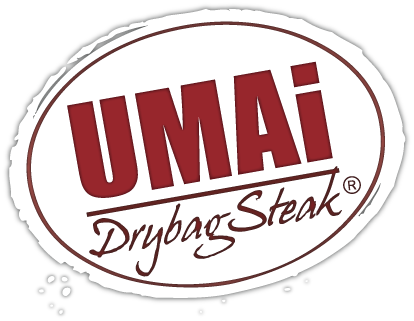- New to using UMAI bags and concerned my first attempt has failed. Would appreciate advice whether to persist or bin it. Temperature control has been all over the place. Some days the meat feels really solid/frozen; other days more pliable, even soft. Is it likely my fridge is not frost free and hence the dry bag system is not going work? Have other UMAI bags and was going to try prosciutto and salamis, but not starting until I have more confidence that my refrigeration is appropriate. Would appreciate any advice.–O.
MAUREEN’S RESPONSE:
Hello, O.
First of all, thank you for the fearlessly thorough, honest description of your process. You are certainly very persistent and creative in trying to make this work with the fridge you’ve got. It is safe to say this is NOT an appropriate environment for dry aging or dry curing the precious meat you are aging in UMAi Dry®.
There are two simple rules for UMAi Dry®-appropriate refrigerator choice:
1) The temp must remain consistently between 1-4C (34-38F), or safe for holding milk for 7-10 days.
2) The freezer attached to the fridge (not sure whether you indicated your appliance has a freezer or not), must remain frost free.
A third (often surprising) guideline is that the fridge should be regularly opened and closed. We have designed the UMAi Dry® application to be best suited to everyone’s kitchen fridge. This is VERY different advice to most dry aging advice (i.e. “commando”) or curing chambers.
Onto you REAL question: Is this meat safe? Obviously, we cannot see or smell the results, so we can only offer there guidelines.
Is the color fairly evenly mahogany brown (not grey or bluish tint)? Is the texture of the ‘bark’ more or less firm all the way around the piece (‘hard, solid plastic,’ as you have described it)?
The TRUE TEST of whether you process has failed or not is the sniff test. As the meat scientists tell us time after time, “The nose knows.” If you sniff the surface of the meat through the UMAi Dry® and detect a ‘pleasant, forest-y, funky’ aroma, you are probably good to remove the UMAi Dry®, trim the ‘bark,’ cut into steaks and cook as appropriate for a steak.
If, however, you smell what strikes you as ‘rotten flesh,’ trust your instincts and do not plan to eat. We would suggest going ahead and “unwrapping” the meat to as to study the color and texture of both bark and inner meat. We would certainly like to learn from your experience–freezing and thawing and overheating the meat such as your refrigerator has done during this dry aging process.
Before you go on to another project, make sure you have some space in a modern, frost free fridge. Using stackable racks can make it easier to use your kitchen fridge.
Hope this helps!!
Maureen
